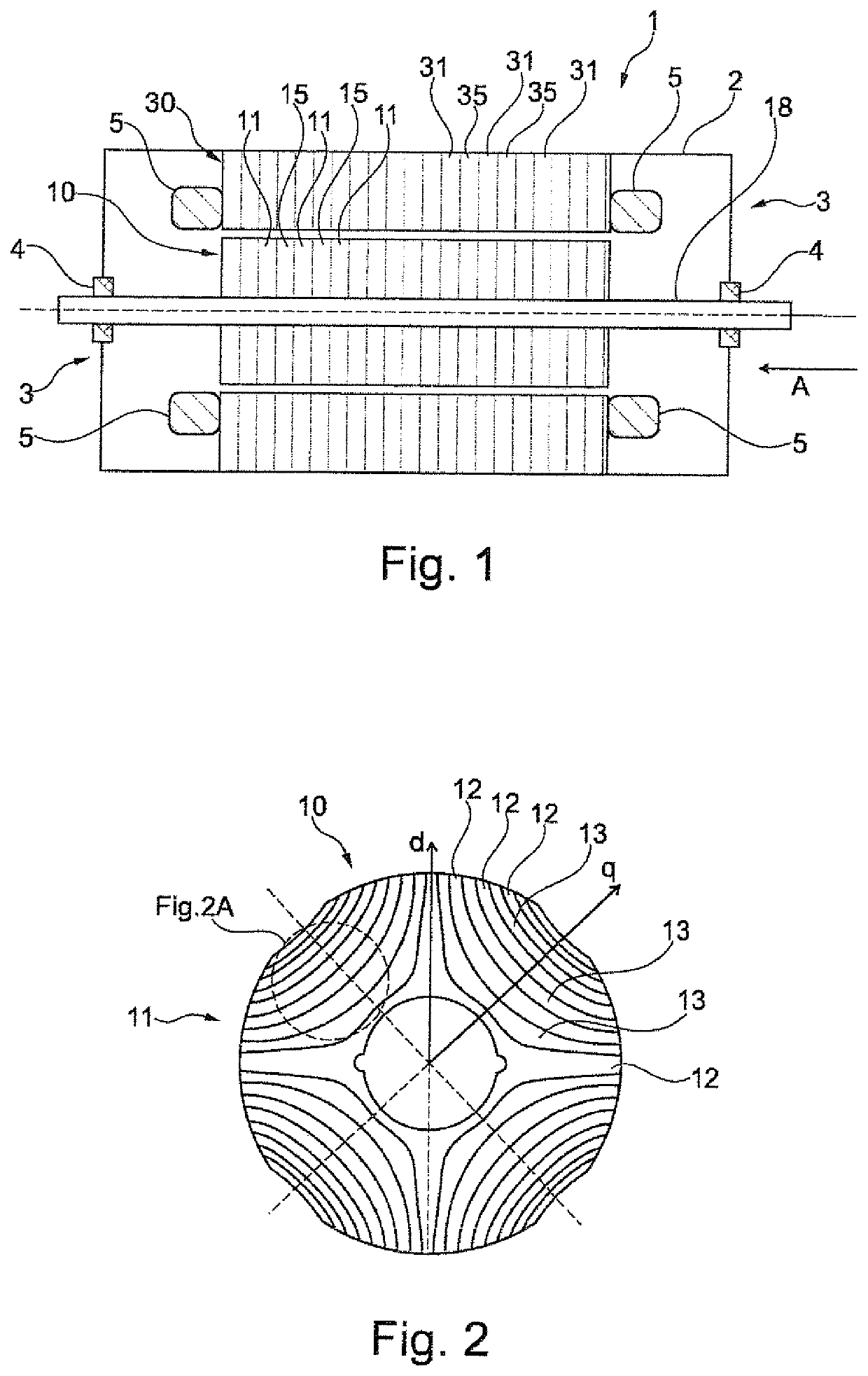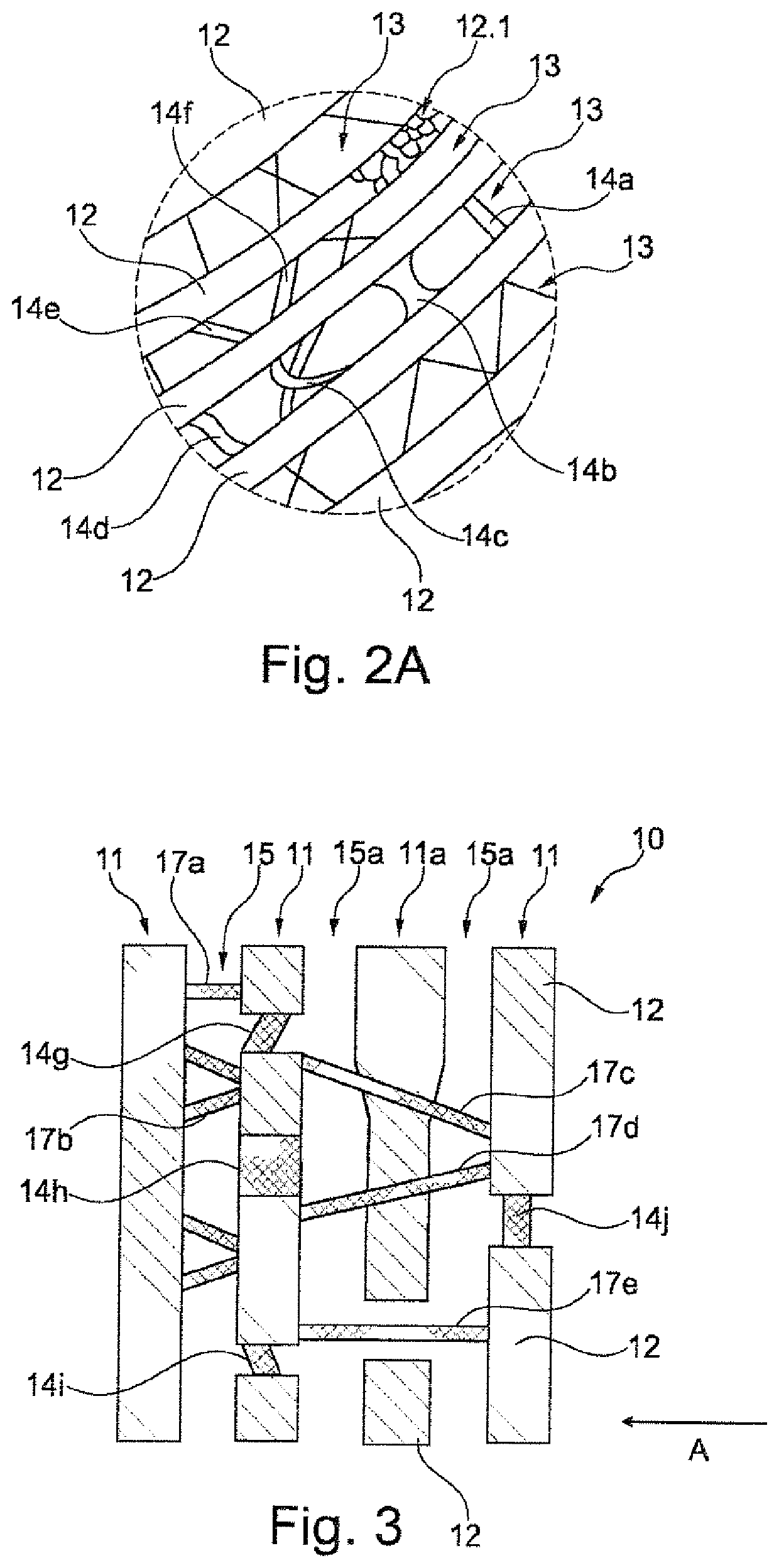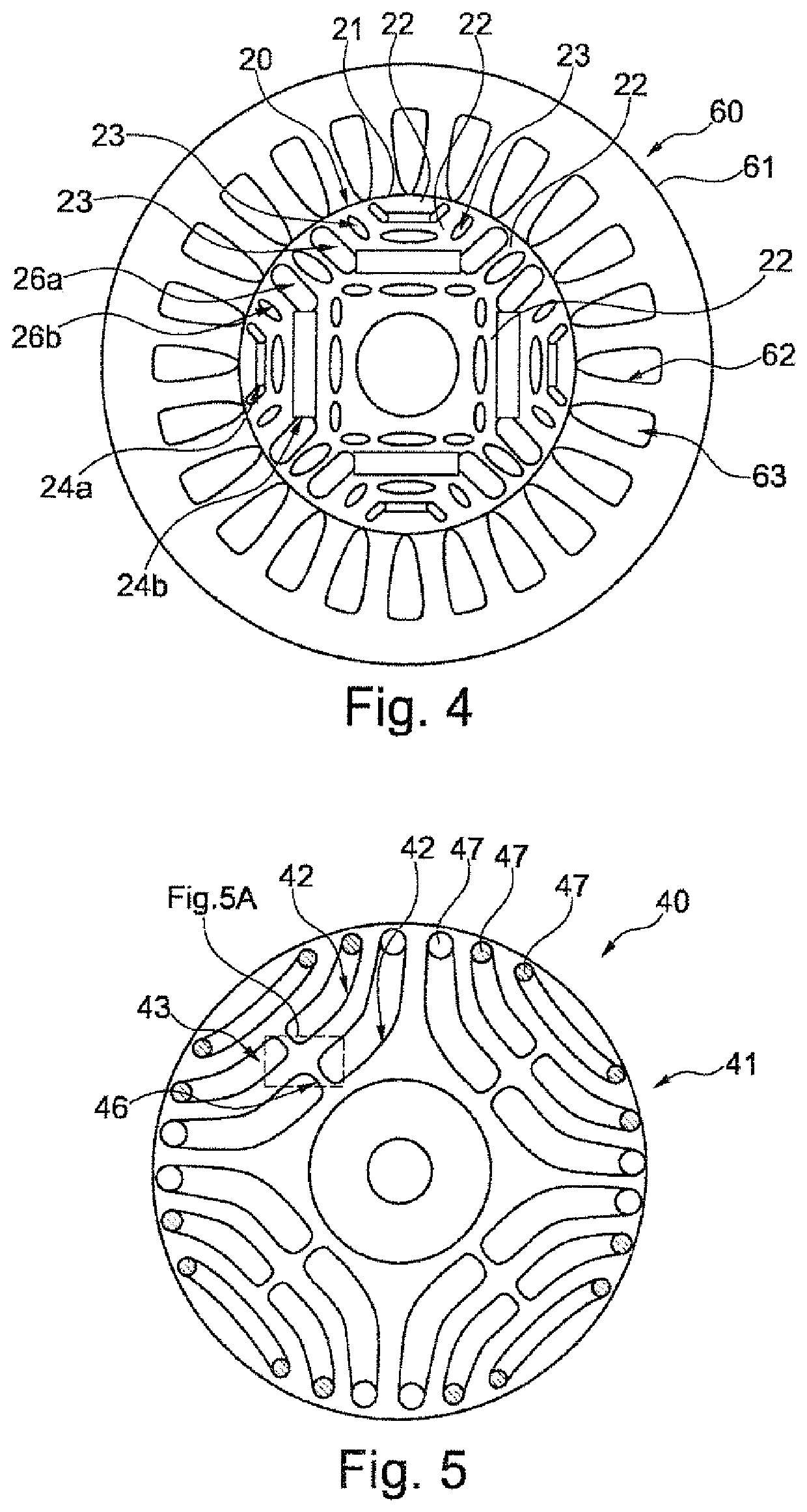Rotor for a reluctance machine
a reluctance machine and rotor technology, applied in the direction of synchronous motors, magnetic circuit rotating parts, magnetic circuit shape/form/construction, etc., can solve the problems of machine being very heavy, parts of the rotor being subjected to significant centrifugal forces, etc., to improve the weight and efficiency of the reluctance machine
- Summary
- Abstract
- Description
- Claims
- Application Information
AI Technical Summary
Benefits of technology
Problems solved by technology
Method used
Image
Examples
second embodiment
[0050]FIG. 4 shows an illustration of a second embodiment variant of a rotor 20 and a stator 60. Shown again in this context is a transverse section relative to the axial direction A, including a conductor layer 61 of the stator 60 and a conductor layer 21 of the rotor 20. The conductor layer 61 of the stator has a plurality of gaps 63 which are arranged in a continuous circle with ribs 62 between them. The ribs 62 are made of magnetic-flux-conducting material here. The conductor layer 61 can be made of stamped steel sheet if applicable or it can be produced in an additive manufacturing method, whereby finer structures can be realized if applicable. The conductor layer 21 of the rotor 20 comprises various conductor regions 22 and insulation regions 23 which are arranged between them. In-layer insulating ribs 24a, 24b are arranged in some insulation regions 23, having been built up from a non-magnetic-flux-conducting material during the course of the additive manufacturing. It is als...
third embodiment
[0051]FIG. 5 shows a third embodiment variant of a rotor 40, only one conductor layer 41 being illustrated again. It is possible here likewise to identify conductor regions 42 and insulation regions 43 arranged between them. The insulation regions 43 may be completely filled with air or in-layer insulating ribs may be sectionally present, though this is not shown here. Furthermore, the conductor regions 42 are partially connected by conductor ribs 46 which extend transversely relative to the directional course of the respective conductor regions 42. The conductor regions 42 and the conductor ribs 46 were produced from two different magnetic-flux-conducting materials in an additive manufacturing method. As shown in FIG. 5A, which represents a magnified detail view of FIG. 5, both the conductor regions 42 and the conductor ribs consist predominantly of a first magnetic-flux-conducting material, in which strips 45 of a second magnetic-flux-conducting material are however embedded. The ...
fourth embodiment
[0053]FIG. 6 shows a fourth embodiment variant of a rotor 50, a conductor layer 51 being illustrated here likewise. This is a variant of the embodiment from FIG. 2, having conductor regions 52 and insulation regions 53 of essentially corresponding design. However, bars 57 of a squirrel-cage winding are attached to the conductor regions 52 at a radially outer side, and are adapted to the shape of the conductor regions 52 in respect of their cross section. In this case, it is obviously advantageous to build up the bars 57 concurrently with the conductor regions 52 and the insulation regions 53 by means of additive manufacturing.
PUM
 Login to View More
Login to View More Abstract
Description
Claims
Application Information
 Login to View More
Login to View More - R&D
- Intellectual Property
- Life Sciences
- Materials
- Tech Scout
- Unparalleled Data Quality
- Higher Quality Content
- 60% Fewer Hallucinations
Browse by: Latest US Patents, China's latest patents, Technical Efficacy Thesaurus, Application Domain, Technology Topic, Popular Technical Reports.
© 2025 PatSnap. All rights reserved.Legal|Privacy policy|Modern Slavery Act Transparency Statement|Sitemap|About US| Contact US: help@patsnap.com



